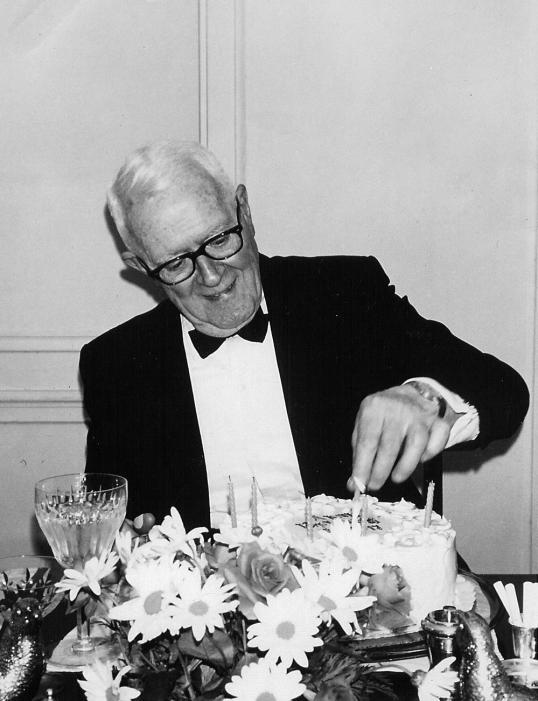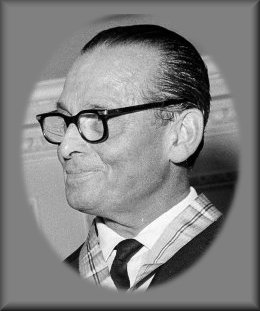It’s tough to find a doctor you can trust.
I’ve written before about Dr. Max Jacobson, a New York City physician that my mother loved dearly, and I was delighted to have had some personal experience with such a famous (or infamous, or notorious, depending on whom you talk to) character.
Subsequent searching turned up a little bit about Max in a book called Schmucks with Underwoods, Conversations with Hollywood’s Classic Screenwriters by Max Wilk:
“Have you ever ead Erich Maria Remarque’s novel Arch of Triumph, the one about the Paris hotel where arll the refugees are living? Well, there’s a character in there, a doctor, a German refugee, living in Paris, and in order to keep himself alive, he’s performing abortions in dirty kitchens… you know who that doctor really was? Dr. Max Jacobson… the same guy who is now in New York!”
The notorious Dr. Feelgood?
“The one and the same Dr. Feelgood!” said [Billy] Wilder. I knew him extremely well – in Berlin, he was my doctor. Talk about writers in exile! Here’s this doctor, in exile, he cannot get a diploma, so he performs abortions… You know how old this guy is today? He has to be in the early 70s! But what a difference from his days in Paris, eh? Whenever he comes out here to L.A., I see him . Or I meet him on planes, he is accompanying Mr. Cecil B. DeMille to Egypt, because Mr. DeMille is going to do a new version of The Ten Commandments, during which Mr. DeMille has himself a heart attack, but Dr. Feelgood pumps him full of his amphetamine magic shots, so Mr. DeMille can still climb ladders and shoot the scenes – with maybe 6,000 extras all standing around!”
And there is also a list of other famous show business and political people who were the patients of the same Dr. Max Jacobson, ranging from our late president Kennedy, with his bad back, to Alan Jay Lerner, and Tennessee Williams, to a raft of other such celebrities, all of them devotees of Dr. Feelgood’s little satchel full of magic elixir shots.”
That last sentence reminded me powerfully of the lovely story by C.M. Kornbluth, “The Little Black Bag,” a follow-up tale in the world of “The Marching Morons.” If only we had such doctors…
As an add-on, in the linked article I mentioned “a New York publication some time before 1968;” thanks to the miracle of the Internet, it turns out that the relevant article from New York magazine was actually published on February 8, 1971 – so I was close. Nobody who ever met Dr. Max could possibly misunderstand to whom “Doctor C” referred, and I remember people in my home discussing the article with much amusement as almost all of our visitors were either patients of or familiar with him.
But back to reality, the first doctor I ever knew was Dr. Arthur F. Anderson, my pediatrician.

This photo is of Dr. Andy, as he was lovingly known to his patients and their families, was taken at his retirement celebration in 1967. He was an immensely kindly gentleman who always put me at ease, made me airplanes out of tongue depressors and rubber bands, and wrote with a fountain pen full of bright blue ink.
In an oral history of Dr. David Annunziato, an Amityville-based pediatrician who passed away in 1995, I found this little tidbit:
I had great teachers. Bill [William] Dock was the professor of medicine. Charlie [Charles A.] Weymuller was the professor of pediatrics. And Charlie Weymuller, though he was a quiet man, apparently knew everybody. You know he knew [Rustin] McIntosh at Columbia [University College of Physicians and Surgeons], [Luther Emmett] Holt [Jr.] at NYU [New York University], Sam [Samuel Z.] Levine at [Weill] Cornell [Medical College]. The man he told me was the smartest pediatrician in the world was a man I only met once, and he was at Lenox Hill [Hospital]. His name was Anderson.
That could be no one else but Dr. Andy; I had my tonsils out at Lenox Hill Hospital in 1954, and I’m pretty sure that he was watching over my case if he himself did not perform the surgery. Which makes it obligatory that I cross-post something from my Live Journal, because it’s relevant to Dr. Andy and Dr. Weymuller, and much better than what I could reconstruct here.
March 21, 2009
Memories come in the strangest ways.
Brooke McEldowney, in his webcomic Pibgorn, just finished up a story arc that lasted a few days short of two years. That’s not as tortuous as Freefall time, but still a good piece of slow-paced fiction.
The new arc which began last Tuesday is entitled (Note to Jef Mallett: Yes, that is an appropriate use of the word) “Pibgorn and the Volcano on 77th Street and Park Avenue.” Forum members immediately brought up satellite images of the intersection, and it turns out that Lenox Hill Hospital sits on that corner.
I grew up in New York, and that rang a bell. Ever since then, I’ve been trying to figure out why it was familiar, aside from the tragic recent death of Natasha Richardson). Was it where I was born? Nah, that was Lying-In Hospital, converted in 1981 to luxury condos (note the baby tondos still adorning the façade).
It just came to me. It’s where I had my tonsils out when I was around three. Unlike Bill Cosby and his ice cream, my memories are different. I remember being alone, shots, and starvation.
When you’re three, you hate shots anyway. Somehow, my beloved pediatrician, Dr. Arthur F. Anderson, managed to avoid being associated with needles, choosing instead to send his evil henchman, the sadistic Dr. Charles Weymuller (in actuality, probably a very nice man) to my home for the requisite torture sessions in which my delicate heinie was violated with ten-foot red hot pokers. But in the hospital, I have this memory of an endless line of nurses armed with jackhammers, marching into my room like clockwork every five minutes to give me shot, after shot, after shot. It was probably only one, but hey, I was three, and alone in a strange crib in a strange place. I still don’t especially care for needles.
Compounding the torment was the fact that they refused to feed me. I was so happy when they finally said I would get some chicken noodle soup. Well, if there was any chicken or any noodles in the soup they brought me, it must have been strained out by the underpaid kitchen staff to supplement their meager salaries, because “broth” would have been too generous an appellation. That hospital stay was not fun.
I was so hungry when I finally got home… they fixed me mashed potatoes with butter, and I was so famished that in my haste I accidentally bit the finger of whoever was feeding me.
And I hadn’t thought of these things for at least 30 years…
In the ensuing years I’ve had numerous other physicians, some better and some less so; bedside manner matters, but a doctor’s interest in you as a person – his or her willingness to address your issues above and beyond the 8 minutes per patient that seems to be standard these days – is critical. A couple of bright stars stand out: I was privileged to have Dr. George Van Komen, a superb and caring physician, as my primary care provider for a time, and my current doctor is not only a physician but also a friend, which counts for a lot.
But I still miss Dr. Andy.
The Old Wolf has spoken.
